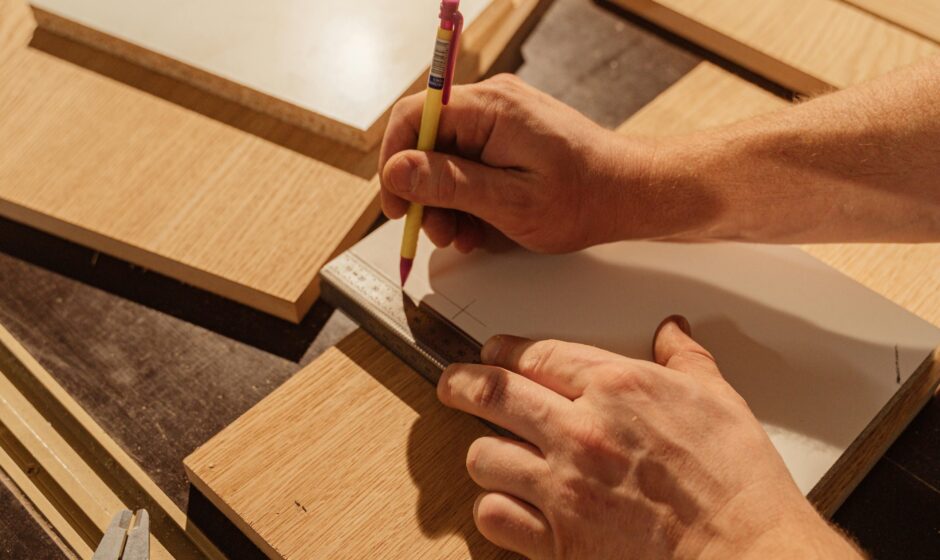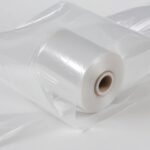In the world of woodworking and construction, choosing the right material is crucial for the success and longevity of your projects. Two popular options that often come up in discussions are High-Density High-Moisture Resistant (HDHMR) boards and Boiling Water Proof (BWP) plywood. Both materials have their strengths and weaknesses, and understanding the differences between them can help you make an informed decision for your specific needs. In this comprehensive guide, we’ll dive deep into the characteristics, advantages, and disadvantages of HDHMR and BWP, helping you determine which option is better suited for your projects.
What is HDHMR?
HDHMR, or High-Density High-Moisture Resistant board, is an engineered wood product that has gained popularity in recent years due to its unique properties and versatility. It is made by compressing wood fibers with resin under high pressure and temperature, resulting in a dense and uniform panel.
Key Features of HDHMR:
- High density and strength
- Excellent moisture resistance
- Smooth surface finish
- Dimensional stability
- Easy to machine and work with
- Eco-friendly manufacturing process
Advantages of HDHMR:
- Superior screw-holding capacity
- Resistant to warping and swelling
- Ideal for high-humidity environments
- Suitable for painting and laminating
- Consistent quality throughout the board
- Lower formaldehyde emissions compared to some alternatives
Disadvantages of HDHMR:
- Generally more expensive than standard MDF or particle board
- Not as water-resistant as BWP plywood
- May require special tools for cutting and shaping
- Limited availability in some regions
What is BWP Plywood?
BWP, or Boiling Water Proof plywood, is a type of plywood that is manufactured using high-quality hardwood veneers and water-resistant adhesives. As the name suggests, it is designed to withstand exposure to boiling water and high humidity conditions.
Key Features of BWP Plywood:
- Excellent water and moisture resistance
- High strength and durability
- Multiple layers of wood veneers
- Graded based on quality and appearance
- Available in various thicknesses and sizes
- Suitable for both interior and exterior applications
Advantages of BWP Plywood:
- Superior water resistance, even in extreme conditions
- High load-bearing capacity
- Resistant to fungal growth and decay
- Suitable for outdoor and marine applications
- Versatile and widely available
- Can be easily painted or varnished
Disadvantages of BWP Plywood:
- More expensive than standard plywood
- Heavier than HDHMR boards
- May have visible grain patterns or imperfections
- Prone to delamination if not properly maintained
- Environmental concerns due to the use of hardwood veneers
HDHMR vs BWP: A Head-to-Head Comparison
Now that we have a good understanding of both HDHMR and BWP plywood, let’s compare them across various factors to help you decide which is better for your specific needs.
1. Moisture Resistance
- HDHMR: High moisture resistance, suitable for humid environments
- BWP: Excellent water resistance, can withstand boiling water and extreme conditions
Winner: BWP plywood takes the lead in moisture resistance, making it the better choice for applications exposed to water or extreme humidity.
2. Strength and Durability
- HDHMR: High density provides good strength and durability
- BWP: Multiple layers of hardwood veneers offer excellent strength and load-bearing capacity
Winner: BWP plywood generally offers superior strength and durability, especially for structural applications.
3. Surface Finish
- HDHMR: Smooth, uniform surface ideal for painting and laminating
- BWP: May have visible grain patterns or imperfections, requires more preparation for a smooth finish
Winner: HDHMR boards provide a better surface finish, making them easier to work with for furniture and cabinetry.
4. Weight
- HDHMR: Lighter weight compared to BWP plywood
- BWP: Heavier due to multiple layers of hardwood veneers
Winner: HDHMR is the lighter option, making it easier to handle and transport.
5. Workability
- HDHMR: Easy to machine, cut, and join; may require special tools for best results
- BWP: Can be worked with standard woodworking tools but may cause more wear on cutting edges
Winner: HDHMR edges out BWP in terms of workability, especially for intricate designs and joinery.
6. Cost
- HDHMR: Generally more expensive than standard engineered wood products but often cheaper than BWP
- BWP: More expensive due to the use of high-quality hardwood veneers and water-resistant adhesives
Winner: HDHMR is often the more cost-effective option, especially for large-scale projects.
7. Environmental Impact
- HDHMR: Manufactured using recycled wood fibers and low-emission resins
- BWP: Uses hardwood veneers, which may contribute to deforestation concerns
Winner: HDHMR is generally considered more eco-friendly due to its manufacturing process and use of recycled materials.
8. Availability
- HDHMR: May have limited availability in some regions
- BWP: Widely available in various grades and sizes
Winner: BWP plywood is more readily available in most markets.
Choosing Between HDHMR and BWP: Application-Specific Recommendations
To help you make the best choice for your project, here are some recommendations based on common applications:
Kitchen Cabinets:
- Recommendation: HDHMR
- Reason: Better surface finish, moisture resistance, and lighter weight for ease of installation
Outdoor Furniture:
- Recommendation: BWP Plywood
- Reason: Superior water resistance and durability in extreme weather conditions
Interior Doors:
- Recommendation: HDHMR
- Reason: Lightweight, dimensionally stable, and easy to machine for hardware installation
Marine Applications:
- Recommendation: BWP Plywood
- Reason: Excellent water resistance and strength in high-moisture environments
Modular Furniture:
- Recommendation: HDHMR
- Reason: Consistent quality, smooth finish, and good screw-holding capacity
Structural Framing:
- Recommendation: BWP Plywood
- Reason: Higher load-bearing capacity and durability for construction applications
Bathroom Vanities:
- Recommendation: HDHMR
- Reason: Good moisture resistance and smooth surface for laminating
External Cladding:
- Recommendation: BWP Plywood
- Reason: Better weatherproofing and resistance to decay
Plywood vs HDMR Sheet: Key Differences
When comparing plywood vs HDMR sheet, it’s important to understand that while both are engineered wood products, they have distinct characteristics:
Composition:
- Plywood: Made of thin layers of wood veneers
- HDMR: Composed of compressed wood fibers and resin
Water Resistance:
- Plywood (BWP grade): Highly water-resistant
- HDMR: Moisture-resistant but not fully waterproof
Surface Finish:
- Plywood: May have visible grain patterns
- HDMR: Smooth, uniform surface
Weight:
- Plywood: Generally heavier
- HDMR: Lighter weight
Workability:
- Plywood: Can be worked with standard tools
- HDMR: May require special tools for optimal results
Applications:
- Plywood: Versatile, used in construction and furniture
- HDMR: Ideal for furniture, cabinets, and interior applications
Understanding these differences between plywood and HDMR sheets can help you choose the right material for your specific project requirements.
Q: Is HDHMR waterproof?
A: HDHMR is highly moisture-resistant but not completely waterproof. For full water resistance, BWP plywood is a better choice.
Q: Can BWP plywood be used for exterior applications?
A: Yes, BWP plywood is suitable for exterior use due to its excellent water resistance and durability.
Q: Which is more environmentally friendly, HDHMR or BWP?
A: HDHMR is generally considered more eco-friendly due to its use of recycled wood fibers and low-emission manufacturing process.
Q: Is HDHMR suitable for kitchen cabinets?
A: Yes, HDHMR is an excellent choice for kitchen cabinets due to its moisture resistance, smooth finish, and ease of laminating.
Q: Can BWP plywood be painted?
A: Yes, BWP plywood can be painted or varnished, but it may require more surface preparation than HDHMR.
Q: Which material is better for structural applications?
A: BWP plywood is generally preferred for structural applications due to its higher load-bearing capacity and durability.
Q: Is HDHMR more expensive than BWP plywood?
A: Typically, HDHMR is less expensive than BWP plywood, but prices can vary depending on quality and market conditions.
Q: Can HDHMR be used in bathrooms?
A: Yes, HDHMR is suitable for bathroom applications due to its moisture resistance, but proper sealing is recommended for best results.
Conclusion: Making the Right Choice for Your Project
When it comes to choosing between HDHMR and BWP plywood, there’s no one-size-fits-all answer. Both materials have their strengths and weaknesses, and the best choice depends on your specific project requirements, budget, and environmental conditions.
HDHMR shines in applications where a smooth surface finish, consistent quality, and good moisture resistance are important. It’s an excellent choice for interior furniture, cabinetry, and decorative applications. The lighter weight and ease of workability make it popular among craftsmen and furniture makers.
On the other hand, BWP plywood excels in situations where superior water resistance, high strength, and durability are crucial. It’s the go-to material for outdoor projects, marine applications, and structural elements in construction.
Ultimately, consider the following factors when making your decision:
- Moisture exposure
- Required strength and load-bearing capacity
- Surface finish needs
- Budget constraints
- Environmental considerations
- Availability in your region
By carefully evaluating these factors and understanding the unique properties of both HDHMR and BWP plywood, you can make an informed decision that ensures the success and longevity of your woodworking or construction project. Remember, in some cases, a combination of both materials might be the optimal solution, leveraging the strengths of each where they’re most beneficial.
Whether you choose HDHMR or BWP, both materials offer significant advantages over traditional wood products and can contribute to the creation of durable, high-quality projects that stand the test of time.



